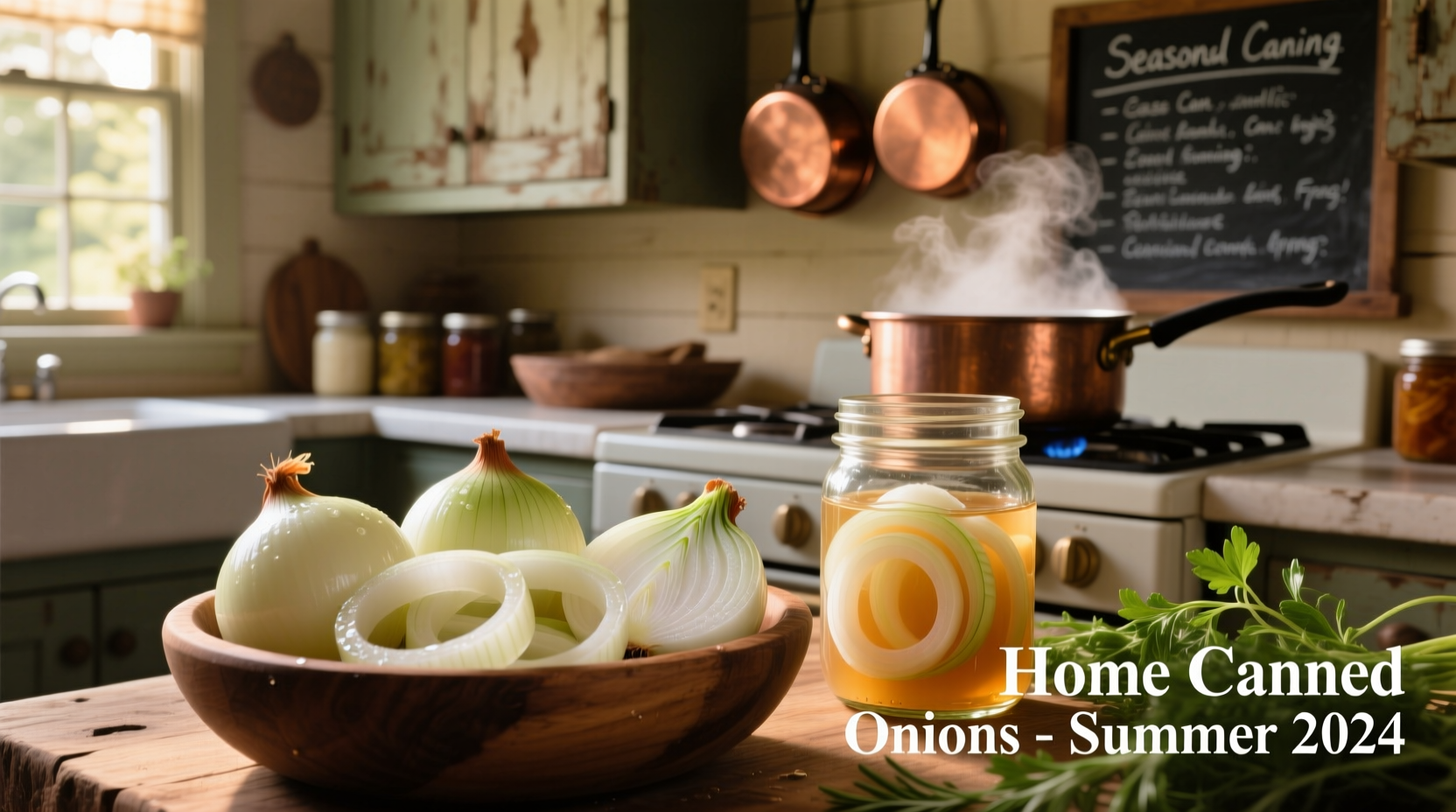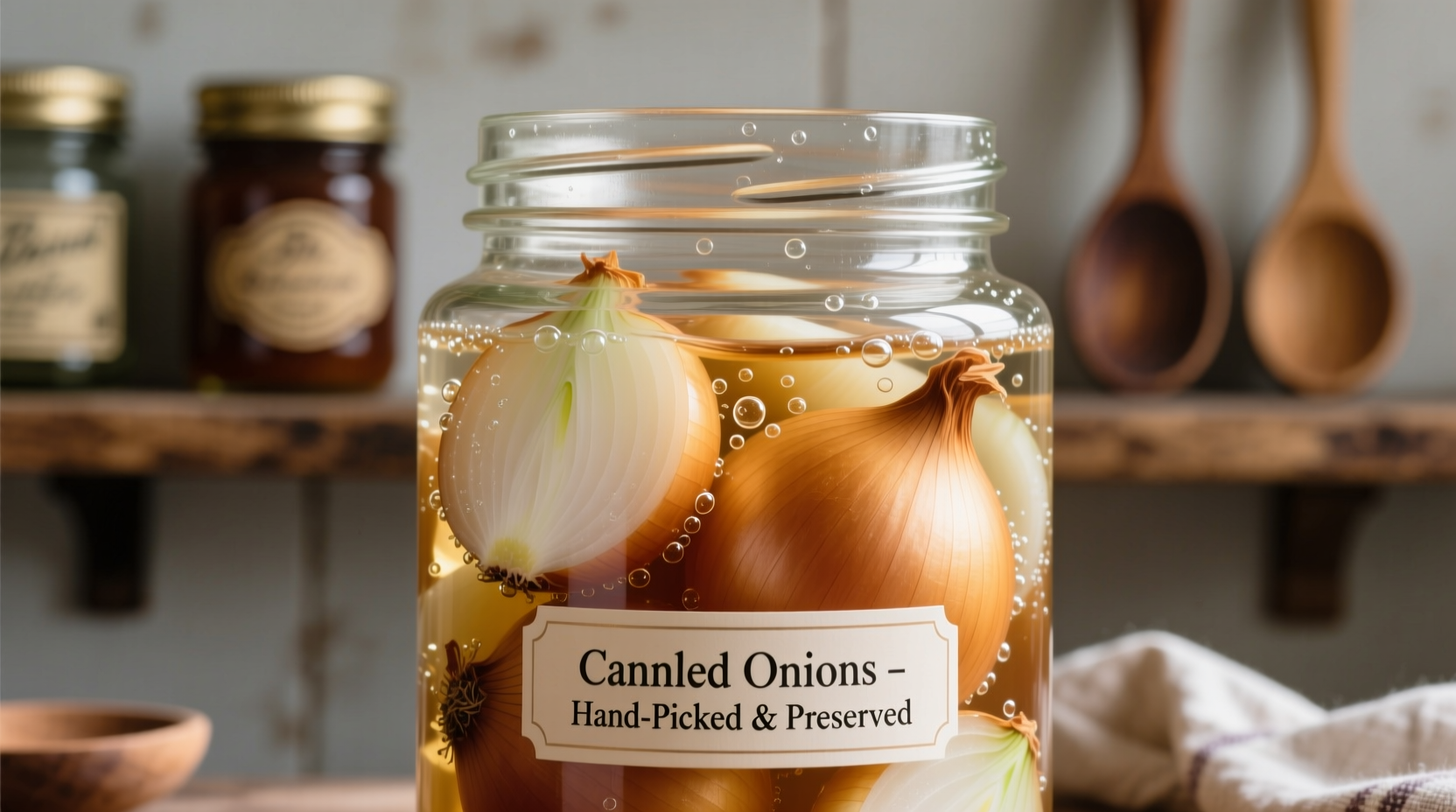Yes, you can safely can onions at home using proper pressure canning techniques. Unlike many vegetables, onions cannot be safely canned using the water bath method due to their low acidity. The USDA recommends processing pint jars of onions for 40 minutes and quart jars for 50 minutes at 10 pounds of pressure in a weighted-gauge pressure canner (or 11 pounds for dial-gauge canners) at elevations below 1,000 feet.
Why Canning Onions Is Different From Other Vegetables
Many home canners make the critical mistake of treating onions like tomatoes or other higher-acid vegetables. Onions have a pH range of 5.3-5.8, placing them firmly in the low-acid food category (pH above 4.6). This means water bath canning is unsafe for onions, as it cannot reach the temperatures needed to destroy Clostridium botulinum spores that cause botulism.

Your Step-by-Step Path to Perfect Canned Onions
Before You Begin: Critical Safety Check
Before gathering your equipment, verify your pressure canner is in proper working condition. According to the National Center for Home Food Preservation, "Pressure canners must have a reliable way to measure pressure (dial gauge or weighted gauge) and must be tested for accuracy annually." University extension services recommend having dial gauges tested before each canning season.
| Elevation Range | Weighted Gauge Pressure | Dial Gauge Pressure | Pint Processing Time | Quart Processing Time |
|---|---|---|---|---|
| 0-1,000 ft | 10 lbs | 11 lbs | 40 min | 50 min |
| 1,001-2,000 ft | 15 lbs | 11 lbs | 40 min | 50 min |
| 2,001-4,000 ft | 15 lbs | 12 lbs | 40 min | 50 min |
| 4,001-6,000 ft | 15 lbs | 13 lbs | 40 min | 50 min |
| 6,001-8,000 ft | 15 lbs | 14 lbs | 40 min | 50 min |
Source: USDA Complete Guide to Home Canning (2023 revision), Table 1-1 for low-acid vegetables
Choosing the Right Onions for Canning
Not all onions perform equally in the canning process. Yellow storage onions (like Yellow Sweet Spanish) provide the best flavor and texture retention. Avoid sweet onions with high water content like Vidalias, which become mushy during processing. The Oregon State University Extension Service recommends selecting firm, mature onions with dry outer skins and no signs of sprouting.
Gathering Your Equipment: What You Actually Need
- Pressure canner (7-quart minimum capacity)
- Mason jars with new lids (pint or quart size)
- Jar lifter and magnetic lid lifter
- Wide-mouth funnel
- Non-metallic utensils for packing
- Large pot for blanching
- Colander and clean towels
The Canning Process: From Prep to Processing
Preparation Phase (15 minutes)
- Peel onions and sort by size (small, medium, large)
- Blanch in boiling water for 3-5 minutes until skins loosen
- Immediately transfer to ice water to stop cooking
- Remove remaining skins and trim root and stem ends
- Leave small onions whole, halve medium, quarter large onions
Packing Jars (10 minutes)
Fill jars with onions, leaving 1-inch headspace. Add ½ teaspoon canning salt per pint (optional for flavor). Do not add liquid - onions will create their own liquid during processing. Remove air bubbles with a non-metallic utensil and adjust headspace as needed.
Processing in Pressure Canner (60-75 minutes)
- Place jars on rack in canner with 2-3 inches of hot water
- Secure lid and heat on high until steam flows steadily
- Wait 10 minutes for steam to vent, then add weight or close petcock
- Bring to proper pressure for your elevation (see table above)
- Start timing once correct pressure is reached
- Maintain steady pressure throughout processing time
- Turn off heat and let pressure return to zero naturally (30-45 minutes)
- Wait 10 minutes after pressure returns to zero before opening
- Remove jars and cool undisturbed for 12-24 hours
Post-Processing: Ensuring Safety and Quality
After cooling, check seals by pressing the center of each lid. It should not flex up or down. Remove rings, wash jars, and store in a cool, dark place. Properly canned onions maintain best quality for 12-18 months. The Penn State Extension emphasizes: "If you detect any off-odors, spurting liquid when opening, or visible mold, discard the entire contents immediately."
When NOT to Can Onions: Critical Boundaries
Understanding the limitations of home canning is as important as knowing the process. Never attempt to can onions if:
- You're using a water bath canner (botulism risk)
- Your pressure canner lacks a reliable pressure gauge
- You're modifying processing times from tested guidelines
- You're adding thickeners like flour or cornstarch to the jars
- You're canning onions with other low-acid vegetables in the same jar
Creative Ways to Use Your Canned Onions
While canned onions work well in soups and stews, they shine in these applications:
- Quick French onion soup base (add broth and cheese)
- Ready-to-use pizza topping
- Base for instant gravy or sauces
- Quick stir-fry component
- Enhanced Bloody Mary mix
For best flavor integration, add canned onions during the last 15-20 minutes of cooking to preserve texture.
Troubleshooting Common Canning Issues
Problem: Jars didn't seal
Solution: Refrigerate and use within 5 days, or reprocess within 24 hours with new lid
Problem: Onions appear cloudy
Solution: This is normal - caused by natural sulfur compounds reacting during processing
Problem: Onions are mushy
Solution: Overprocessing or using overly mature onions; adjust processing time slightly next batch
Problem: Liquid loss during processing
Solution: Headspace was insufficient or pressure dropped too quickly; ensure proper headspace and natural depressurization











 浙公网安备
33010002000092号
浙公网安备
33010002000092号 浙B2-20120091-4
浙B2-20120091-4